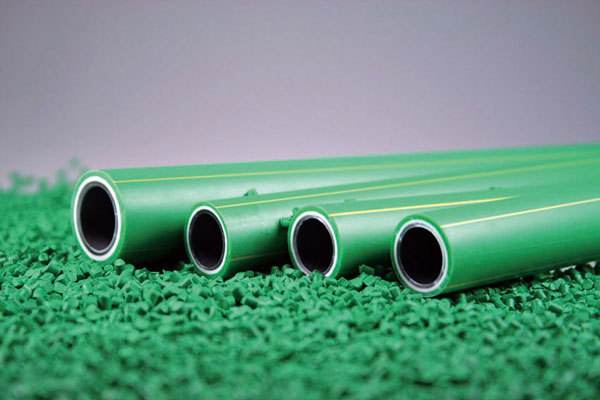What is the difference between PVC pipe and PPR pipe?
Published on :2020-09-17
In recent years, with the continuous progress of social economy, the construction industry, municipal engineering, water conservancy engineering, etc. continue to develop. PPR pipes and PVC pipes have also been widely used in these industries. So since these pipes can be used, what is the difference between PVC pipe and PPR pipe?
Introduction to PVC pipes

The full name is Polyvinylchlorid drainage pipe, which is a kind of vinyl polymer material. PVC pipe is a kind of pipe product with strong toughness, good heat resistance and good ductility. It consists of an upper layer, a middle layer and a lower layer. The upper layer of the PVC pipe is a layer of paint film, which plays the role of waterproof and anti-aging; the middle layer is the polyvinyl chloride layer, which is the main base layer; and the lower layer is the back coating adhesive Agent. There are many types of PVC pipe specifications, because its uses can be divided into two types: drainage pipes and line pipes, so there are many categories of products. The commonly used home decoration is 32-50mm, 75-110mm.
Introduction to PPR Pipe

The full name is polypropylene random copolymer which is great for water supply pipes (PPR) has good toughness, high strength, excellent processing performance, good creep resistance at higher temperatures, and has the unique advantages of high transparency of random copolymer polypropylene. The interface of the PPR pipe adopts hot-melt technology, and the pipes are completely fused together, so once the installation and pressure test pass, there will be no longer aging and water leakage like aluminium-plastic pipes.
What is the difference between PPR pipe and PVC pipe?
1. Different raw materials
PPR pipe is mainly made of copolymer polypropylene, so PPR pipe is also called type three polypropylene pipe, and PVC is made of polyvinyl chloride material.
2. Different wall thickness
The wall thickness of PPR pipes is divided into four parts, six parts, etc., the wall thickness of the four parts is 2.3mm, and the thickness of the 6 parts is 3.5mm. PVC pipes are calculated with a diameter of 6mm and a wall thickness of 2.0mm, a nominal diameter of 8-10mm and a wall thickness of 2.5mm. In the same pipe diameter, the wall of the PPR pipe should be thicker
3. Different prices
Due to the different wall thickness of the pipe, the price will vary. In addition, prices vary from place to place. Under normal circumstances, the price of PVC is lower than that of PPR, and low price is also an advantage of PVC materials.
4. Different application fields
PVC pipes are used in many industries such as building materials, packaging, and medicine. Among them, the building materials industry accounts for the largest proportion, at 60%, followed by the packaging industry, and there are several other small-scale applications.
PPR has a wide range of applications: ①The cold and hot water system of the building, including the central heating system; ②The heating system in the building, including floor, wall panels and radiant heating system; ③The transportation of city gas; ④ Urban and rural water supply and drainage system; ⑤The pure water supply system for direct drinking is also extremely safe and sanitary; ⑥ Central (centralized) air conditioning system; ⑦Industrial piping systems for transporting or discharging chemical media; ⑧Pipe system such as gas path used for cylinder transmission; ⑨ Agriculture such as irrigation or spraying of pesticides; ⑩Power and optical cable sheath.
5. The color is different
The toughness of PPR pipe is better than that of PVC, and the color of good quality is bright, others are light creamy yellow, and the color of poor quality is chaotic. The PVC pipe is milky white, the material is harder than PPR, the cross section has no light, but the outer surface is shiny.
6. Different performance
The installation of PPR pipe is very convenient, because PPR has good welding performance, whether it is thermal welding or electric welding machine, it is very convenient. PVC is relatively heavy and its corrosion resistance is better than PPR, but it cannot withstand high temperatures. It is often used for cold water transportation and cannot be hot-connected during installation. It can only be bonded with PVC glue. The cold water transportation service life can reach 70 years.
Which is better, PPR pipe or PVC pipe?
If you are home improvement, it is recommended that you choose PPR pipes, because PPR pipes are better than PVC pipes in terms of various properties, and the home needs hot water. PPR pipe also has the characteristics of good corrosion resistance, sanitation and non-toxicity, small expansion force, and firm connection of the system, which is more suitable for home improvement and water supply. The only disadvantage of PPR and PVC is that the price is slightly more expensive. PVC pipes are more suitable for drainage pipes and are more economical.
